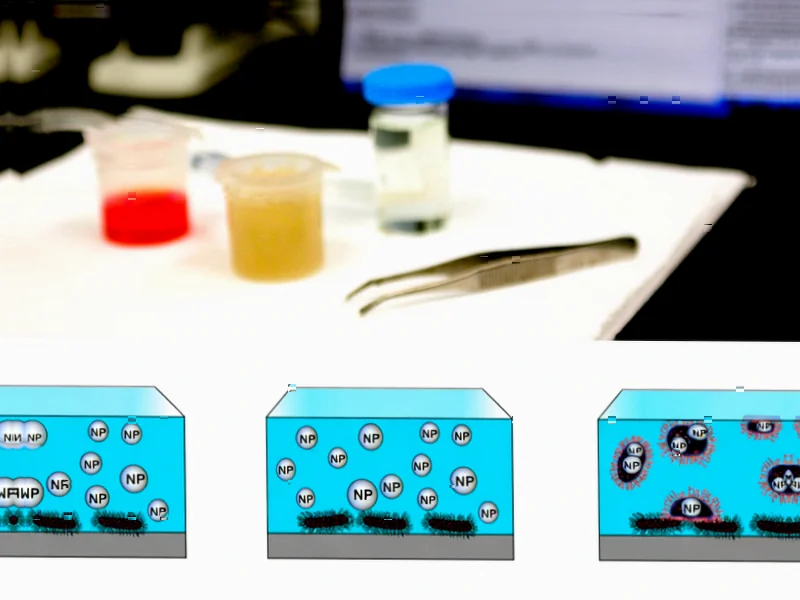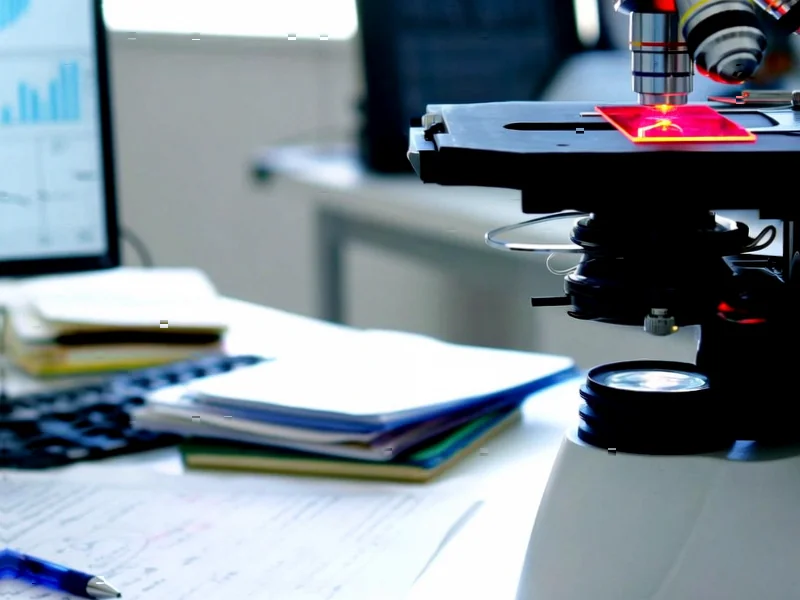According to Nature, researchers have developed polycaprolactone (PCL) nanospheres that significantly enhance the effectiveness of imipenem against carbapenem-resistant Klebsiella pneumoniae. The nanoparticles, averaging 610±125 nm in size with 84.5% drug encapsulation efficiency, demonstrated an eightfold reduction in minimum inhibitory concentration compared to free imipenem. The formulation not only accelerated bacterial killing and inhibited biofilm formation but also suppressed key resistance genes while maintaining over 80% viability in fibroblast cells, confirming high biocompatibility. This nanotechnology approach addresses the urgent threat posed by multidrug-resistant bacteria that cause mortality rates up to 70% in healthcare settings.
Table of Contents
The Superbug Crisis Demands Innovation
The development comes at a critical juncture in the global fight against antimicrobial resistance, which the World Health Organization considers one of the top ten global public health threats. What makes CRKP particularly dangerous is its ability to acquire multiple resistance mechanisms simultaneously. These bacteria don’t just resist one class of antibiotics – they often carry resistance genes for multiple drug classes, creating what’s known as multiple drug resistance. The traditional approach of developing new antibiotics has largely stalled, with few novel classes discovered in recent decades, making delivery enhancement technologies like this particularly valuable.
How Nanotechnology Outsmarts Resistance
The brilliance of this approach lies in its multi-pronged attack on bacterial defenses. Conventional antibiotics face multiple barriers: bacteria can pump drugs out, break them down with enzymes, or prevent entry entirely. The PCL nanospheres essentially Trojan-horse their way past these defenses. The nanoparticles protect the imipenem payload from degradation while ensuring concentrated delivery directly to bacterial cells. More importantly, by suppressing resistance genes at the molecular level, the treatment potentially prevents bacteria from developing further resistance during therapy – a common problem with conventional antibiotic treatments.
Tackling the Protective Fortress
Perhaps the most significant advancement is the formulation’s ability to combat biofilm formation. Biofilms act as protective fortresses for bacterial communities, making them up to 1,000 times more resistant to antibiotics. The nanoparticle approach appears to disrupt this protective matrix, allowing the antibiotic to reach embedded bacteria. This is crucial because biofilm-associated infections are notoriously difficult to treat and often lead to chronic conditions requiring prolonged, expensive therapies with poor outcomes.
The Road to Clinical Application
While the preclinical results are impressive, significant challenges remain before this technology reaches patients. Scaling up nanoparticle production while maintaining consistent size and drug loading presents manufacturing hurdles. Regulatory pathways for antibiotic-loaded nanoparticles are still evolving, and long-term stability studies will be necessary. Additionally, the cost-effectiveness compared to conventional antibiotics must be demonstrated, though the potential to reduce hospital stays and treatment failures could justify premium pricing.
Beyond Single Infections
The implications extend far beyond CRKP infections. The same platform technology could be adapted for other difficult-to-treat infections, including other multidrug-resistant Gram-negative bacteria and even fungal infections. The ability to combine multiple therapeutic agents in a single nanoparticle opens possibilities for combination therapies that could prevent resistance development entirely. As resistance patterns evolve, this flexible platform approach may prove more sustainable than developing individual new antibiotics.
A New Paradigm in Infectious Disease Treatment
This research represents a paradigm shift from simply discovering new antibiotics to enhancing existing ones through advanced delivery systems. The combination of improved efficacy, resistance gene suppression, and biofilm penetration addresses multiple failure points of current treatments simultaneously. While human trials are still needed, the high biocompatibility demonstrated suggests a favorable safety profile. If successfully translated to clinical practice, this approach could significantly impact the alarming mortality rates associated with hospital-acquired infections and help regain ground in the ongoing battle against superbugs.
Related Articles You May Find Interesting
- Federated Learning Breakthrough: Smarter Client Selection Boosts Brain Tumor Detection
- Seattle’s AI Paradox: Layoffs and Innovation Collide in Tech Hub
- Engineering Plant Immunity: The Next Frontier in Crop Protection
- The Double-Edged Sword of Daily Open-Source Updates
- Multiscale AI Outperforms Traditional Models in Lung Cancer Detection



